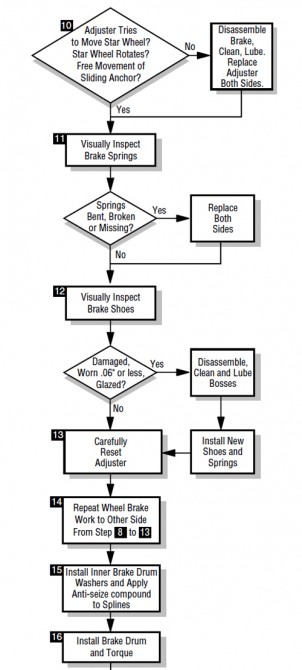Generac Fuel Solenoid Troubleshooting: Expert Tips & Solutions
Is your Generac generator giving you trouble? If you’re experiencing issues with the fuel solenoid, you’re not alone.
Many generator owners face similar challenges, and understanding how to troubleshoot this component can save you time and money. Imagine the peace of mind you’ll feel when your generator runs smoothly again, powering your home or business without a hitch.
In this guide, we’ll break down the steps to identify and fix common problems with your Generac fuel solenoid. You’ll gain the confidence to tackle these issues head-on, ensuring your generator is ready whenever you need it. So, let’s dive in and get your generator back up and running efficiently.
Common Fuel Solenoid Issues

The fuel solenoid in a Generac generator plays a crucial role in controlling fuel flow to the engine. When issues arise, they can lead to serious performance problems.
By understanding common Generac fuel solenoid problems, you can maintain generator efficiency and prevent costly repairs. Identifying signs early ensures reliable operation during outages.
Signs of a Malfunctioning Generac Fuel Solenoid
A faulty solenoid often produces noticeable symptoms. Watch for these warning signs:
-
Engine won’t start – fuel flow may be restricted.
-
Engine stalls suddenly – the solenoid might not stay engaged.
-
Unusual clicking sounds – often linked to electrical issues.
-
Slow or inconsistent engine response – improper fuel delivery.
-
Fuel leaks around the solenoid – a sign of seal or structural failure.
If you notice one or more of these signs, your Generac fuel solenoid likely needs inspection or replacement.
Causes of Generac Fuel Solenoid Failure
Several factors can cause a Generac fuel solenoid failure:
-
Dirt and debris buildup – blocks proper fuel flow.
-
Electrical issues – faulty wiring or poor connections affect performance.
-
Excessive heat – heat expansion damages internal parts.
-
Wear and tear over time – natural aging reduces effectiveness.
Preventive Tip
Regular cleaning, inspection, and testing can reduce the chances of solenoid failure and extend the life of your generator.
Addressing Generac fuel solenoid problems early keeps your generator running efficiently and avoids costly breakdowns during critical times.
Diagnostic Tools And Techniques
Generac fuel solenoid troubleshooting involves checking for electrical connections and ensuring proper valve function. Key steps include inspecting wires and verifying voltage levels. Regular maintenance helps prevent operational issues and ensures reliable generator performance.
When your Generac generator refuses to start or runs erratically, it can be a frustrating experience—especially during a power outage. Understanding and applying diagnostic tools and techniques can be your first step toward a quick fix.
These tools not only save you time but can also spare you the cost of unnecessary repairs. By learning how to properly use these tools, you can gain confidence in maintaining your generator.
Using Multimeters for Generac Generator Testing
A multimeter is one of the most effective Generac generator diagnostic tools. It’s essential for testing the fuel solenoid, which plays a key role in proper operation.
Steps to Test the Solenoid with a Multimeter
-
Set the multimeter to measure resistance.
-
Disconnect the solenoid from the generator.
-
Place the multimeter probes on the solenoid terminals.
-
Check resistance readings:
-
A healthy solenoid should display a specific resistance value (refer to your generator’s manual).
-
An infinite or zero reading usually indicates a faulty solenoid that may require replacement.
-
Pro Tip: Interpreting multimeter readings requires attention to detail. If you’re unsure, consult online forums, instructional videos, or your manufacturer’s support resources.
Visual Inspection Tips for Generac Generator Components
Never underestimate the power of a visual inspection when troubleshooting.
What to Look for During Inspection
-
Corrosion on the solenoid or its connections (can block electrical flow).
-
Loose wires or connectors that may cause erratic generator behavior.
-
Physical damage like cracks or dents on the solenoid body.
Sometimes, simply tightening a connection or removing corrosion can resolve issues without deeper diagnostics.
Why Generac Generator Diagnostic Tools Matter
By combining multimeter testing and visual inspection, you can:
-
Identify problems early.
-
Prevent costly repairs.
-
Extend your generator’s lifespan.
-
Gain confidence in handling basic troubleshooting.
Using Generac generator diagnostic tools and techniques puts you in control of maintenance. A quick check could be all that stands between you and a reliable backup power source.
Repair And Replacement Strategies
Repairing and replacing a Generac fuel solenoid may seem daunting, but with the right strategies, you can tackle it effectively. Whether your generator is stalling or refusing to start, a faulty fuel solenoid might be the culprit.
Understanding how to repair or replace this component can save you from unnecessary stress and costly repairs. The following steps provide practical guidance to help you through the replacement process and ensure you choose the right parts.
Steps to Replace a Generac Fuel Solenoid
Follow these steps carefully when performing a Generac fuel solenoid replacement:
-
Turn off and disconnect power
-
Ensure the generator is completely powered down and unplugged.
-
Safety always comes first.
-
-
Locate the fuel solenoid
-
Typically found near the carburetor.
-
Refer to your generator’s manual for the exact location.
-
-
Remove the old solenoid
-
Use a wrench to unfasten screws or bolts.
-
Keep track of wiring and connections for easier reinstallation.
-
-
Install the new solenoid
-
Secure it in the same way as the old part.
-
Double-check all connections to avoid malfunctions.
-
-
Test your generator
-
Restart the generator.
-
A smooth start indicates successful replacement.
-
Hearing that engine roar back to life is one of the most rewarding moments in DIY repairs.
Choosing the Right Replacement Parts
Selecting the correct Generac fuel solenoid replacement is critical for reliable performance. Keep these factors in mind:
-
Match your generator model
Ensure compatibility with your specific Generac generator. -
Buy from reputable suppliers
Avoid subpar components that may fail prematurely. -
Check reviews and ratings
User feedback can help identify the most durable and reliable options. -
Verify compatibility with other parts
This prevents operational issues and ensures seamless performance.
Investing in high-quality parts today protects you from unexpected failures tomorrow.
Why Generac Fuel Solenoid Maintenance Matters
Maintaining your Generac fuel solenoid is key to:
-
Preventing generator stalling or startup failures.
-
Avoiding costly emergency repairs.
-
Ensuring reliable backup power during outages.
-
Extending the life of your generator.
Have you ever faced a sudden power outage during an important task? Regular maintenance and timely replacement of your fuel solenoid can help you avoid that frustration and ensure your generator delivers when you need it most.
Repairing or replacing a Generac fuel solenoid is simpler than it seems. With the right steps and quality parts, you’ll restore your generator’s performance and secure peace of mind during power outages.
Preventive Maintenance Tips
Generac fuel solenoid troubleshooting involves checking electrical connections and ensuring the solenoid receives power. Regular maintenance includes cleaning components and inspecting for wear. Address issues promptly to ensure reliable generator performance.
Preventive maintenance is the key to keeping your Generac fuel solenoid in top condition. By taking proactive steps, you can avoid unexpected breakdowns and costly repairs.
Let’s look at some practical maintenance tips that can save you time and headaches.
Regular Cleaning and Inspection of Generac Fuel Solenoid
Keeping your fuel solenoid clean is one of the simplest ways to extend its lifespan.
Cleaning Tips
-
Wipe down the solenoid with a clean, dry cloth.
-
Remove dust and debris that may cause blockages.
-
Avoid using harsh chemicals that can damage components.
Inspection Checklist
-
Look for cracks, dents, or frayed wires.
-
Check for signs of corrosion on terminals and connectors.
-
Replace damaged parts immediately to prevent failures.
Skipping cleaning can lead to unexpected shutdowns. A quick wipe-down now can save you from major issues later.
Routine Checks for Optimal Performance
Routine checks ensure your Generac fuel solenoid is always ready when you need backup power.
What to Check
-
Functionality: Test the solenoid periodically to confirm it engages properly during startup.
-
Connections: Verify all connections are secure. Tighten loose ones to prevent malfunctions.
-
Response time: Ensure the solenoid reacts quickly when the generator starts.
Maintenance Schedule
-
Perform checks once a month.
-
Set a reminder on your phone or calendar to stay consistent.
-
Record your inspection results for future reference.
Regular checks keep your solenoid running smoothly and ensure your generator won’t let you down in an outage.
Why Generac Fuel Solenoid Preventive Maintenance Matters
By following a preventive maintenance routine, you can:
-
Reduce the risk of sudden generator failures.
-
Extend the lifespan of your fuel solenoid.
-
Save money on emergency repairs.
-
Ensure reliable performance during power outages.
Giving your Generac fuel solenoid the care it deserves through preventive maintenance guarantees peace of mind. A few minutes of cleaning and routine checks each month can make all the difference in keeping your generator dependable.
Expert Recommendations
For Generac fuel solenoid troubleshooting, expert recommendations focus on identifying common issues like faulty wiring or clogged solenoids. Regular inspections and cleaning help ensure smooth operation, preventing unexpected generator shutdowns. Understanding basic component functionality aids in quick problem-solving and maintaining reliable performance.
Preventive maintenance is the key to keeping your Generac fuel solenoid in top condition. By taking proactive steps, you can avoid unexpected breakdowns and costly repairs.
Let’s look at some practical maintenance tips that can save you time and headaches.
Regular Cleaning and Inspection of Generac Fuel Solenoid
Keeping your fuel solenoid clean is one of the simplest ways to extend its lifespan.
Cleaning Tips
-
Wipe down the solenoid with a clean, dry cloth.
-
Remove dust and debris that may cause blockages.
-
Avoid using harsh chemicals that can damage components.
Inspection Checklist
-
Look for cracks, dents, or frayed wires.
-
Check for signs of corrosion on terminals and connectors.
-
Replace damaged parts immediately to prevent failures.
Skipping cleaning can lead to unexpected shutdowns. A quick wipe-down now can save you from major issues later.
Routine Checks for Optimal Performance
Routine checks ensure your Generac fuel solenoid is always ready when you need backup power.
What to Check
-
Functionality: Test the solenoid periodically to confirm it engages properly during startup.
-
Connections: Verify all connections are secure. Tighten loose ones to prevent malfunctions.
-
Response time: Ensure the solenoid reacts quickly when the generator starts.
Maintenance Schedule
-
Perform checks once a month.
-
Set a reminder on your phone or calendar to stay consistent.
-
Record your inspection results for future reference.
Regular checks keep your solenoid running smoothly and ensure your generator won’t let you down in an outage.
Why Generac Fuel Solenoid Preventive Maintenance Matters
By following a preventive maintenance routine, you can:
-
Reduce the risk of sudden generator failures.
-
Extend the lifespan of your fuel solenoid.
-
Save money on emergency repairs.
-
Ensure reliable performance during power outages.
Giving your Generac fuel solenoid the care it deserves through preventive maintenance guarantees peace of mind. A few minutes of cleaning and routine checks each month can make all the difference in keeping your generator dependable.
Frequently Asked Questions (FAQs)
What are the common signs of a faulty Generac fuel solenoid?
A malfunctioning solenoid can cause issues such as the engine failing to start, sudden stalling, unusual clicking sounds, slow or inconsistent engine response, and even visible fuel leaks around the solenoid.
What causes a Generac fuel solenoid to fail?
The most common causes include dirt and debris buildup, faulty wiring or poor electrical connections, excessive heat damaging internal components, and natural wear and tear over time.
How can I test a Generac fuel solenoid to confirm if it’s working?
You can use a multimeter to measure resistance after disconnecting the solenoid. A healthy solenoid should show a specific resistance value (check your manual). Zero or infinite readings usually indicate a faulty solenoid.
Can I replace a Generac fuel solenoid myself?
Yes, with proper safety precautions. You’ll need to disconnect power, locate and remove the old solenoid, install the new one securely, and test the generator. Always ensure compatibility with your specific model before replacement.
How often should I perform preventive maintenance on my fuel solenoid?
It’s recommended to clean and inspect the solenoid at least once a month. Routine checks for corrosion, cracks, loose wires, and response time during startup help prevent unexpected breakdowns.
Why is preventive maintenance important for the fuel solenoid?
Regular maintenance reduces the risk of sudden failures, extends the lifespan of the solenoid, saves money on emergency repairs, and ensures your generator provides reliable backup power during outages.
Conclusion
Troubleshooting a Generac fuel solenoid doesn’t have to be complex. Start with basic checks. Ensure connections are tight. Look for any visible damage. Listen for unusual sounds. Regular maintenance can prevent future issues. Replace parts if they seem worn out.
Consult your manual for specific guidance. A well-functioning solenoid keeps your generator running smoothly. Remember, safety first. Always disconnect power before inspecting. Seek professional help if needed. Keep your generator in top shape. With these tips, you can tackle solenoid problems with confidence.






